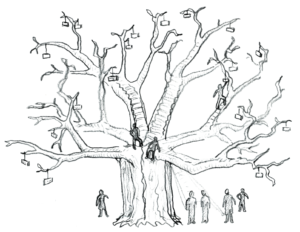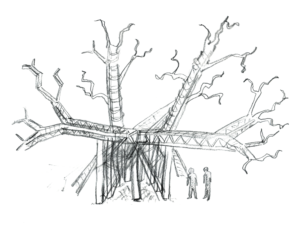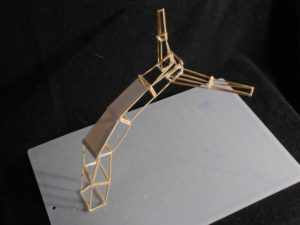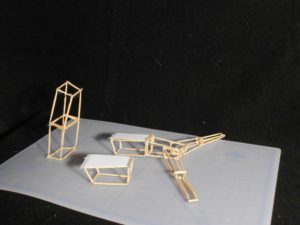I got back to Blender and added a couple passes of leaves. I simply floated them below each of the twigs, expecting up to 4 on each one. On the "sparse" view, I put one leaf on about half the twigs.

It's kind of hard to see the sparse collection, so here's the "man on the branch" view:
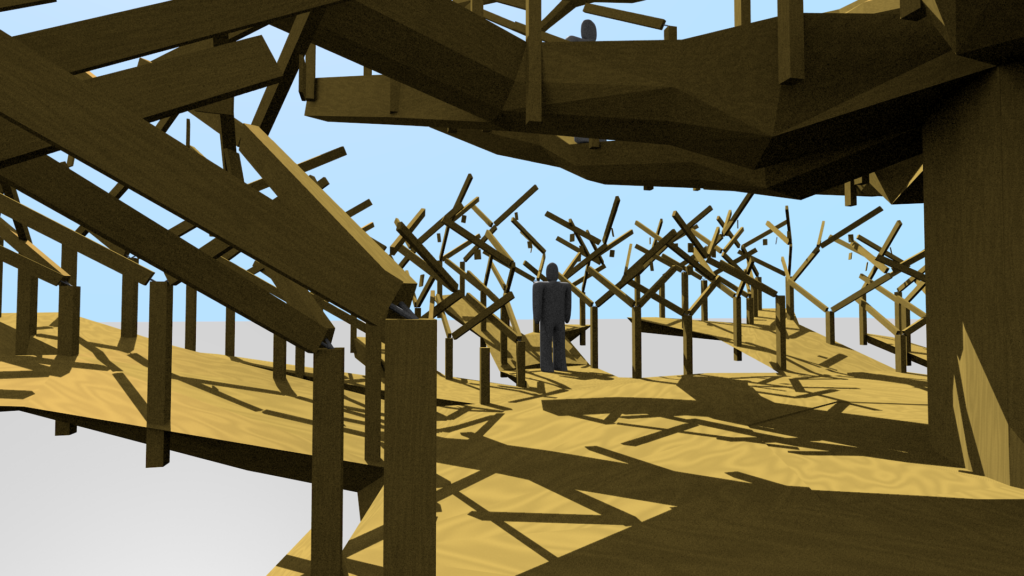
And then I went ahead and filled out nearly all the open slots—I think there's about 200 empty with 2,008 filled. Again from the branch-view for comparison-sake:
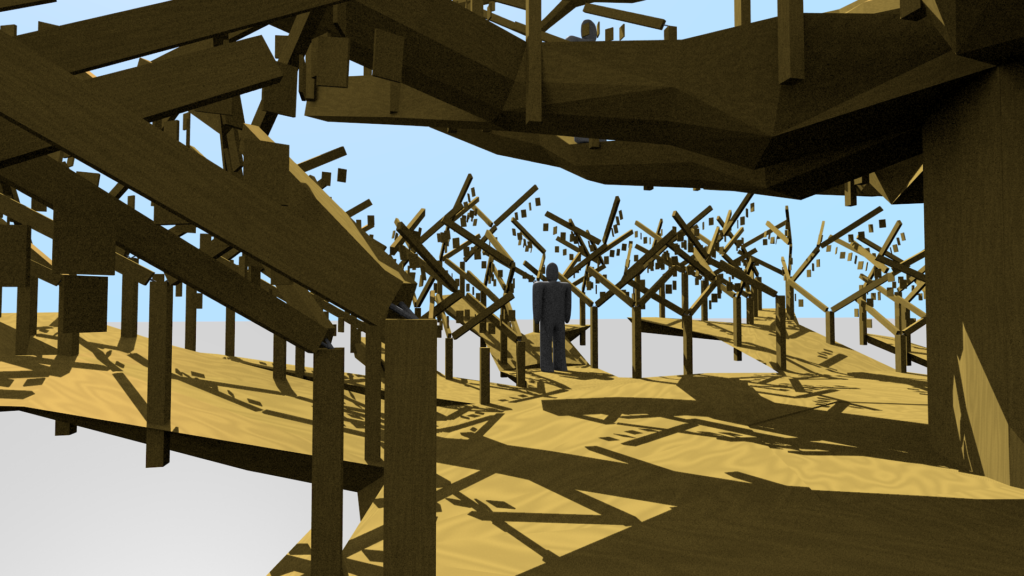
Finally, I've been enamored of the "far-away" view even though I haven't posted much:
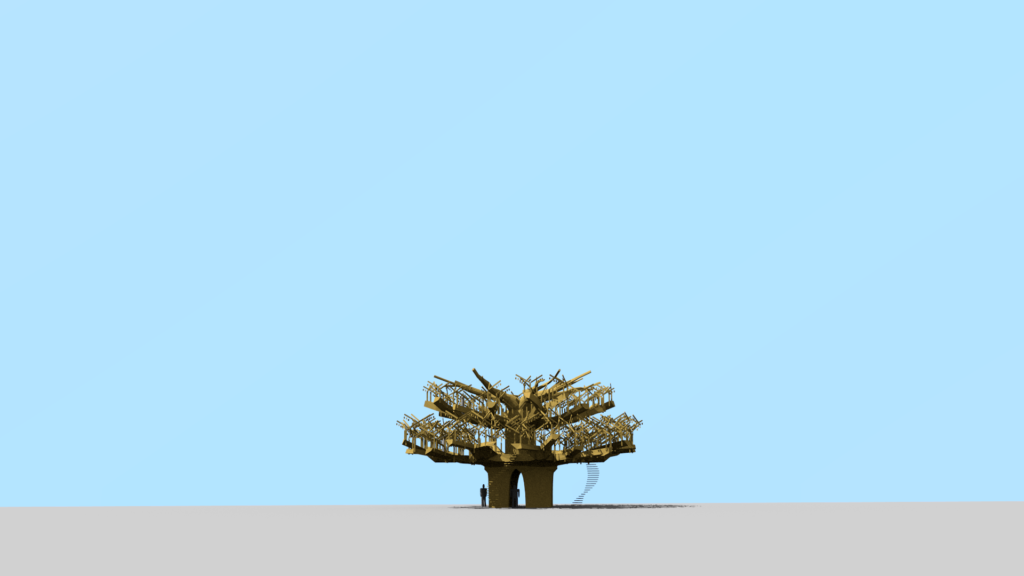
I think this pretty much concludes my work with this particular 3D model. Right now I can see making two models in the future: first is one that will be the basic shell with the mechanics to allow it to be assembled, and how it will collapse; second is a final design that will be a board-by-board construction that should really drive me insane. One change would be to go with 2×3 lumber for the twigs instead of 2x4s. This would make the twigs look, well, more twiggy and allow the leaves to stand out more.
In thinking about the next stage, I'm thinking that the crowning branches might not be worth having—at least not in the thick form they are now. From my first idea of how the Temple would be, I kind of knew how the lower level would be assembled and how it would collapse. Recently I devised a way for the second tier to be added, modelling it after a kind of scissor-jack that would raise it into place. That would also allow it to collapse straight down as the lower-level split outward.



